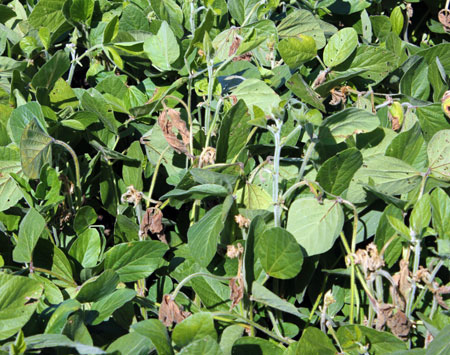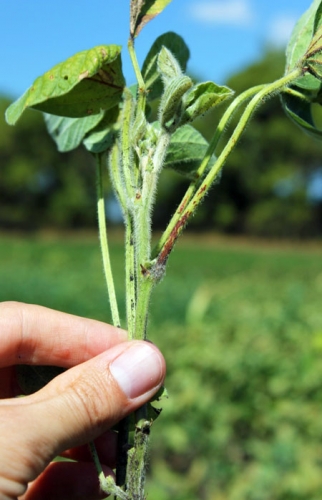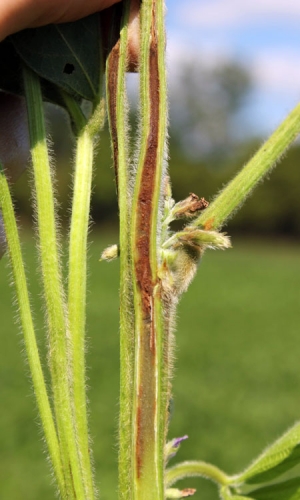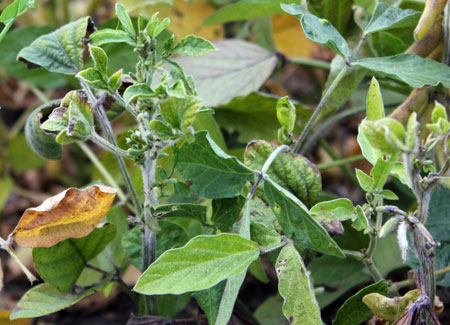Phytoplasma (aster yellows) identified on Michigan soybeans
Phytoplasma, a specialized bacteria capable of causing yield loss, has been observed in a Michigan soybean field during the 2012 season.
Extensive top dieback, stunting, purpling of stem surfaces particularly at nodes with internal necrosis (tissue death), leaf vein discoloration and bud proliferation were noted in a Michigan soybean field. Subsequent DNA analysis indicated that a phytoplasma (Candidatus Phytoplasma asteris subgroup 16SrI-B) was associated and the likely causal agent of disease.

Top dieback seen on multiple plants.

Purpling of the stem as exhibited on the
petiole of this
plant.

Internal necrosis associated with purpling
of the stems
often initiating around nodes.

Stunted plants with bud proliferation.
Phytoplasmas are specialized bacteria that lack a cell wall. They often cause plant deformity symptoms such as witches broom or yellowing. Phytoplasmas live and reproduce inside plant phloem tissue and are moved from host-to-host via phloem-feeding insect vectors. Sap-feeding insects can become infected with a phytoplasma when feeding upon an infected host; the phytoplasmas are then thought to colonize and reproduce within the insect vector. There is no known seed transmission of phytoplasmas.
Given the specialized and obligate (requiring a living host) lifestyle of phytoplasmas, it has not yet been possible to culture phytoplasmas which makes them difficult to study. Fortunately, current DNA techniques do provide us with tools to identify and characterize these organisms.
We currently know little about the distribution or prevalence of this disease, and although accurate yield loss estimates are not available, we have clearly seen that this disease is very capable of causing yield loss. Phytoplasmas are not known to be readily seed-treated and no rescue treatments are available.
Growers and crop consultants should be aware of the disease. Possible cases can be reported to Martin Chilvers (chilvers@msu.edu) for investigation and plant samples can be submitted to MSU Diagnostic Services.



 Print
Print Email
Email


